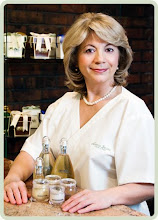Skin Safety Update: What You Should Know About Risky Ingredients
- DEA (diethanolamine)/MEA (monoethanolamine)/TEA (triethanolamine): Already restricted in the European Union, these potential liver and kidney carcinogens are still commonly used in the U.S. and Asia to adjust the pH of cosmetics or to increase the foaming of action of cleansers. Their toxic effects include allergies, eye irritation, and dryness.
- Silicone-derived emollients: Stay clear of dimethicone, dimethicone copolyol, and cyclomethicone. Manufactured from the same material used for breast implants, these popular lubricants are widely used in skin creams that claim to reduce the appearance of wrinkles and to “lock in” moisture. What the product makers fail to mention is that this sticky goo coats your face like a layer of Saran wrap, trapping sebum, dirt, and bacteria, while preventing your skin from breathing and releasing metabolic waste. Research has shown that silicones are stored in our livers and lymph nodes and contribute to the development of cancerous tumors.
- Midazolidinyl urea: A wide variety of cosmetics, from exfoliants, eye creams, and anti-aging and rosacea treatments to sunscreens and makeup remover, contain this synthetic preservative. Typically derived from ammonia, midazolidinyl urea is currently under study as a possible carcinogen and has been shown to release the potentially deadly chemical formaldehyde during the manufacturing process. Formaldehyde can also cause eczema, blistering, contact dermatitis, and severe allergic responses.
- Lanolin: Who would imagine the old standby of our mother’s generation could increase our exposure to toxic chemicals? An “organic” oil derived from sheep’s wool, this seemingly harmless natural moisturizer is often contaminated with carcinogenic pesticide residues.
- Sodium lauryl sulphate (SLS): A common ingredient in shampoos, body washes, and other bath products, this industrial-strength detergent is made up of lightweight molecules that quickly penetrate into the deeper layers of our skin. Scientific studies indicate that SLS can accumulate in the brain, as well as in the heart and liver. SLS is so caustic that according to Judi Vance, author of Beauty To Die For (Promotion Publishing, 1998) it not only can impair the functioning of skin cells and hair follicle, but also frequently serves as the chemical irritant of choice in clinical skin-care studies.
Labels: anti-aging treatments, dermatitis, Lavie Organique, natural skincare, risky skin-care ingredients, skin-care contaminants







